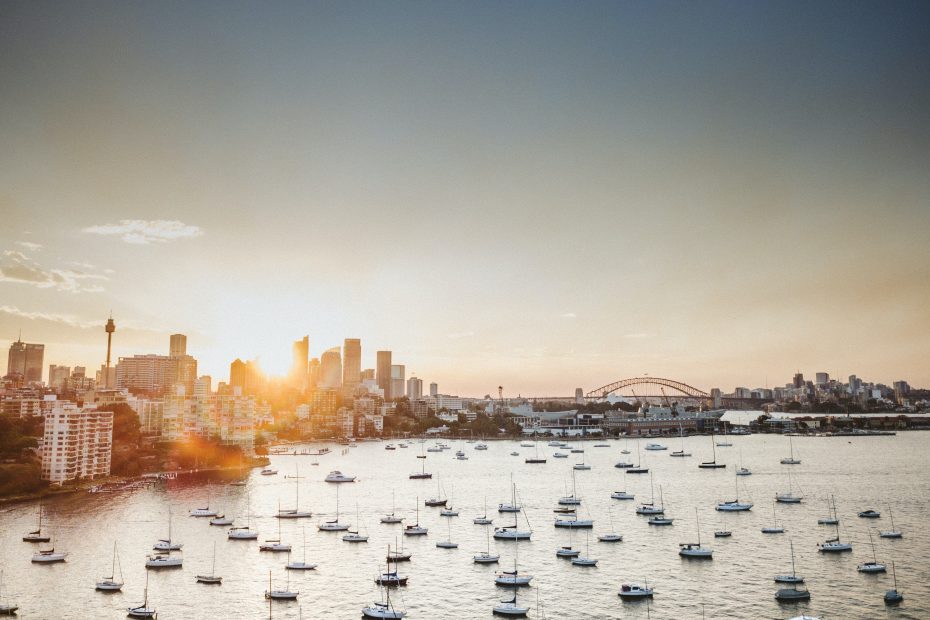Table of Contents
Introduction
The Sydney Opera House is one of the most recognizable buildings in the world and an architectural marvel. Since its opening in 1973, it has become an iconic symbol of both Sydney and the Australian nation. Its unique shell-shaped design is a feat of engineering and stands out in the Sydney Harbour skyline. The opera house represents a milestone in 20th-century architecture and has had an enormous cultural impact on Australia.
Design and Construction
The Sydney Opera House was designed by renowned Danish architect Jørn Utzon, who won an international competition for its design in 1957. Utzon’s vision was to create a building that looked like huge shells or billowing sails on the harbour. The shell motif fits the nautical setting and reflects the oceanic origins of Australia.
Utzon designed the shells using sophisticated geometric principles based on spheres and sections of spheres. This allowed him to create the curved, organic shapes that let the building blend into its natural surroundings. The shell structure is comprised of precast concrete sections covered in over 1 million self-cleaning tiles that simulate the appearance of shells.
Constructing the unconventional design presented immense engineering difficulties. At the time, the ability to compute complex shapes was limited. Utzon had to design the shells through trial and error using physical models. The curved roofs also posed challenges, requiring the development of new structural solutions.
After 14 years of construction, disagreement led Utzon to resign before the project was finished. The opera house finally opened in 1973, 10 years later than planned and 14 times over budget. Despite the challenges, Utzon’s vision was ultimately realized, creating an architectural landmark.
World Heritage Site
In 2007, the Sydney Opera House was formally recognized as a UNESCO World Heritage Site. This designation confirmed its status as one of the most architecturally significant and innovative buildings of the 20th century.
The opera house exhibits a radically new approach to architecture. Its sculptural form and harmonious relationship with the environment set it apart from earlier buildings. UNESCO declared it “stands by itself as one of the indisputable masterpieces of human creativity.”
Performance Venues
The interior of the Sydney Opera House contains several venues for performances.
The largest hall is the Concert Hall, home to the Sydney Symphony Orchestra. With seating for over 2,600 people, it hosts concerts, operas, and ballets.
The Opera Theatre is the venue for large-scale opera performances. Its size can be modified with a movable proscenium arch.
The Drama Theatre has seating for over 550 and hosts plays and musicals in an intimate setting.
The Studio is a flexible space for small experimental productions and events.
There are also exhibition rooms, function areas, bars and restaurants within the complex. The opera house hosts over 3,500 events annually, welcoming millions of audience members.
Cultural Impact
The Sydney Opera House has had an enormous cultural influence on Australia. It has become a unifying national symbol and an expression of Sydney’s identity. The building’s iconic image features prominently in promotions for Sydney and Australia.
Tourism has been transformed, with the opera house now one of the most-visited sites in the Southern Hemisphere. It serves as an instantly recognizable emblem of the city and country. The annual Vivid Sydney festival centered on the opera house draws in over 2 million visitors alone.
The opera house has also enabled Sydney and Australia to host major cultural events and performances by the world’s leading artists. It has facilitated greater cultural exchange and enrichment.
Renovations and Upgrades
While remaining dedicated to its preservation, renovations have been undertaken to upgrade the Sydney Opera House’s functionality.
In the late 1990s, major work was done to improve the acoustics and technical facilities of the concert hall and opera theatre, enabling them to meet modern standards.
Accessibility has also been enhanced by adding lifts and escalators. These renovations have allowed the opera house to serve as a cutting-edge performing arts center while retaining its heritage.
Careful work continues on preserving and restoring the building’s exterior tiles and glass walls. The opera house requires constant maintenance to conserve Utzon’s vision.
Conclusion
The Sydney Opera House has had an unparalleled impact as a cultural institution in Australia. It has come to symbolize Australia’s growing self-confidence and identity. Utzon’s design is considered a masterpiece of 20th century architecture that changed the field. This iconic building will continue inspiring awe and wonder for generations to come.
Sydney Opera House FAQs
What makes the Sydney Opera House design unique?
The Sydney Opera House features a unique shell-like design comprised of precast concrete sections covered in tiles. The sculptural curved shape was unprecedented in architecture when it was built.
How many tiles cover the exterior?
Over 1 million self-cleaning tiles cover the roof and walls of the Sydney Opera House. The tiles are ceramic and custom-made to simulate shells.
What shows are performed at the Sydney Opera House?
A wide variety of shows are held, including plays, musicals, operas, ballet, concerts, comedy acts, and more. Over 3,500 events take place annually.
How many visitors does the Sydney Opera House receive annually?
Over 8.2 million people take tours of the Sydney Opera House each year. It is one of Australia’s premiere tourist attractions.
Who was the architect for the Sydney Opera House?
Danish architect Jørn Utzon designed the Sydney Opera House. He won an international competition in 1957 with his visionary modernist design.
